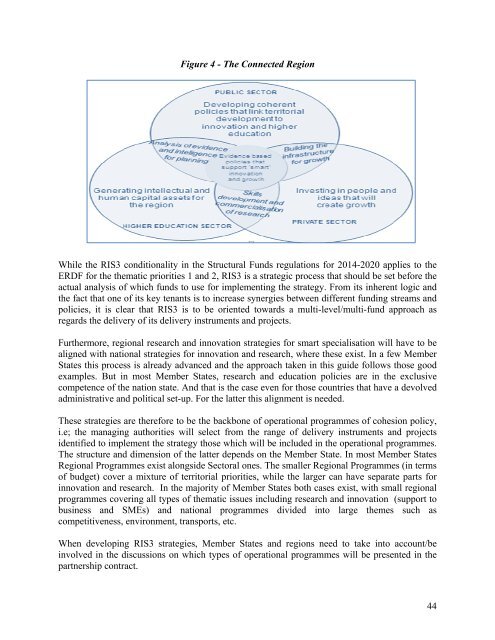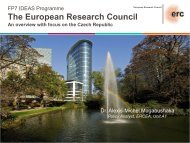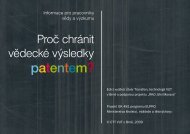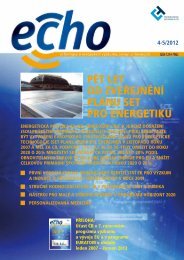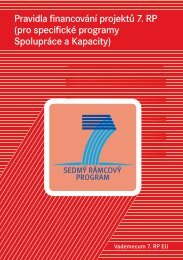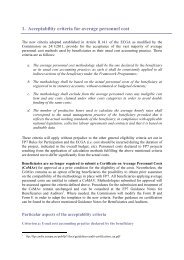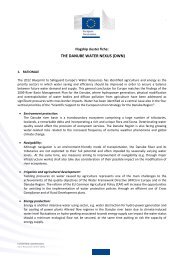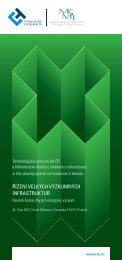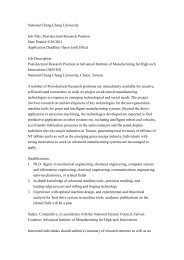Guide to Research and Innovation Strategies for Smart Specialisation
Guide to Research and Innovation Strategies for Smart Specialisation
Guide to Research and Innovation Strategies for Smart Specialisation
Create successful ePaper yourself
Turn your PDF publications into a flip-book with our unique Google optimized e-Paper software.
Figure 4 - The Connected Region<br />
While the RIS3 conditionality in the Structural Funds regulations <strong>for</strong> 2014-2020 applies <strong>to</strong> the<br />
ERDF <strong>for</strong> the thematic priorities 1 <strong>and</strong> 2, RIS3 is a strategic process that should be set be<strong>for</strong>e the<br />
actual analysis of which funds <strong>to</strong> use <strong>for</strong> implementing the strategy. From its inherent logic <strong>and</strong><br />
the fact that one of its key tenants is <strong>to</strong> increase synergies between different funding streams <strong>and</strong><br />
policies, it is clear that RIS3 is <strong>to</strong> be oriented <strong>to</strong>wards a multi-level/multi-fund approach as<br />
regards the delivery of its delivery instruments <strong>and</strong> projects.<br />
Furthermore, regional research <strong>and</strong> innovation strategies <strong>for</strong> smart specialisation will have <strong>to</strong> be<br />
aligned with national strategies <strong>for</strong> innovation <strong>and</strong> research, where these exist. In a few Member<br />
States this process is already advanced <strong>and</strong> the approach taken in this guide follows those good<br />
examples. But in most Member States, research <strong>and</strong> education policies are in the exclusive<br />
competence of the nation state. And that is the case even <strong>for</strong> those countries that have a devolved<br />
administrative <strong>and</strong> political set-up. For the latter this alignment is needed.<br />
These strategies are there<strong>for</strong>e <strong>to</strong> be the backbone of operational programmes of cohesion policy,<br />
i.e; the managing authorities will select from the range of delivery instruments <strong>and</strong> projects<br />
identified <strong>to</strong> implement the strategy those which will be included in the operational programmes.<br />
The structure <strong>and</strong> dimension of the latter depends on the Member State. In most Member States<br />
Regional Programmes exist alongside Sec<strong>to</strong>ral ones. The smaller Regional Programmes (in terms<br />
of budget) cover a mixture of terri<strong>to</strong>rial priorities, while the larger can have separate parts <strong>for</strong><br />
innovation <strong>and</strong> research. In the majority of Member States both cases exist, with small regional<br />
programmes covering all types of thematic issues including research <strong>and</strong> innovation (support <strong>to</strong><br />
business <strong>and</strong> SMEs) <strong>and</strong> national programmes divided in<strong>to</strong> large themes such as<br />
competitiveness, environment, transports, etc.<br />
When developing RIS3 strategies, Member States <strong>and</strong> regions need <strong>to</strong> take in<strong>to</strong> account/be<br />
involved in the discussions on which types of operational programmes will be presented in the<br />
partnership contract.<br />
44


